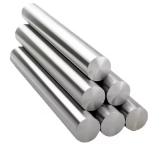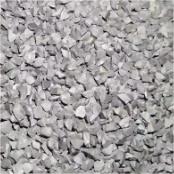**Battle-Ready Bling: Picking the Perfect Plate Armor Metal**
(What Kind Of Metal For Plate Armor)
Imagine a knight clanking across a muddy field. Sunlight glints off polished metal plates. That suit wasn’t just fancy clothes. It was life insurance. Picking the right metal? That was the difference between walking away and being carried off. Forget flimsy tin. Armor needed serious stuff.
For centuries, the go-to metal was **wrought iron**. Blacksmiths hammered this stuff endlessly. It was tough. It resisted bending. It could take a hit. But wrought iron had problems. It was soft compared to later metals. A really hard sword blow could dent it badly. Fixing those dents meant more hammering. More time. More money. Plus, wrought iron rusted easily if you didn’t keep it clean and oiled. It was available. It was workable. It was the standard for a long, long time.
Then came **mild steel**. Think of it as wrought iron’s stronger cousin. Steel is basically iron with a bit of carbon mixed in. This small change made a big difference. Mild steel was harder than wrought iron. It resisted dents better. It was also springier. It could absorb the shock of a hit better. This meant better protection for the person inside the suit. Mild steel became much more common as metal-making improved. It offered a better balance of protection and cost. Good armor needed good steel.
But the knights and soldiers wanted even more. They needed armor that wouldn’t just dent, but would actually stop sharp points and sword edges. Enter **hardened steel**. This was the top tier. Making it was tricky. Armorers took pieces of good steel. They heated them very hot. Then they plunged them into cold water or oil. This process, called quenching, made the surface extremely hard. Really hard steel can deflect sword blows. It can stop arrowheads. It makes armor much more effective.
Hardening had a catch. Making the whole piece super hard made it brittle. Like glass. A hard hit could shatter it. That’s bad. So armorers got smart. They often hardened only the most vital areas. The breastplate protecting the heart. The helmet protecting the skull. These critical spots got the super-hard treatment. Less vital areas, like the insides of the arms, might be left softer. This softer steel was tougher. It wouldn’t shatter. This gave the best mix: hard protection where it mattered most, toughness everywhere else.
So, why not hardened steel for everyone? Simple. Cost and skill. Making quality hardened steel armor took master armorers. It took time. It took expensive materials. This made it very pricey. Only the richest knights or elite soldiers could afford a full suit of the best hardened steel. Most soldiers made do with mild steel. Or even iron reinforced with steel plates on the chest and head. You used what you could get. You used what you could afford. Your life literally depended on it.
Think about the blacksmith’s forge. Hot metal. Sweat and muscle. Every hammer blow shaped survival. The metal choice decided if an arrow skidded off or punched through. It decided if a mace blow just rang your bell or cracked your ribs. Better metal meant better chances. But better metal meant more work. More skill. More money. It was a constant trade-off.
(What Kind Of Metal For Plate Armor)
The evolution is clear. Wrought iron was the starting point. Mild steel offered a solid upgrade. Hardened steel was the peak. But getting that peak performance perfectly? That was an art. Armorers learned to harden surfaces selectively. They learned to balance hardness with toughness. A suit of plate armor wasn’t just metal. It was a masterpiece of practical engineering. Built piece by piece. Tested in the worst conditions imaginable. The right metal wasn’t chosen lightly. It was chosen for battle.
Inquiry us
if you want to want to know more, please feel free to contact us. (nanotrun@yahoo.com)


